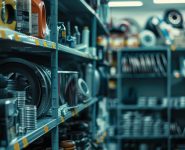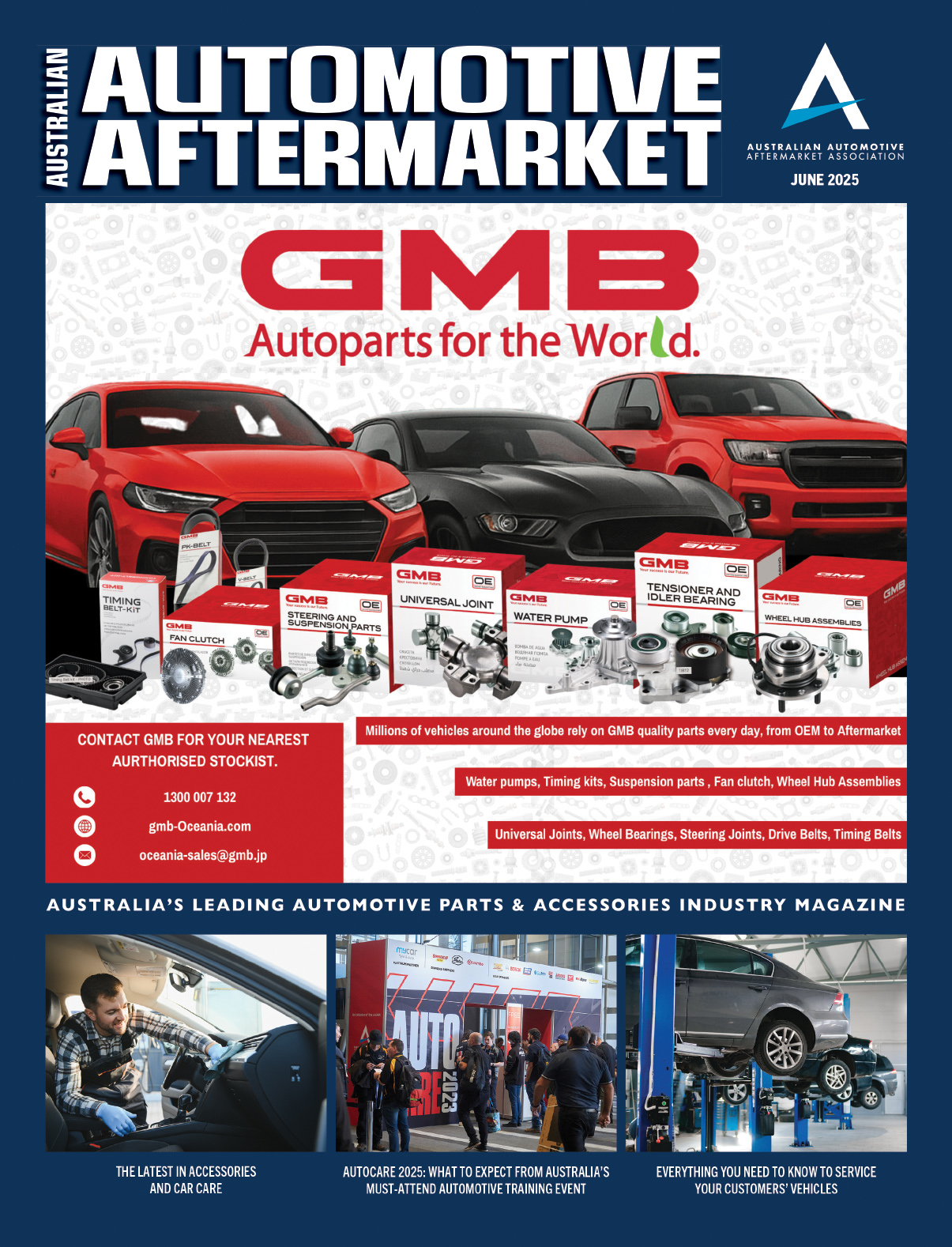CRUCIAL TIMES AHEAD
In recent years, Australia’s automotive aftermarket has experienced a significant transformation, but the years ahead are likely to see as much change again
With an increasing variety of vehicles entering the market, alongside the growing challenge of attracting and retaining skilled workers, the industry finds itself at a pivotal moment.
This makes it crucial for individual workshops to consider the changing environment if they want to remain viable and ultimately succeed.
There are currently 19.7 million Passenger and Light Commercial Vehicles registered in Australia, comprising 16 million consumer vehicles (which undergo 28 million services per year) and 3.7 million fleet vehicles.
Combined, this means an annual spend of $10 billion on service and repair work each calendar year.
While there is a lot of discussion about the growing need to service zero and low emission vehicles, Fifth Quadrant new vehicle sales forecasts show that despite electric and hybrid vehicles making up the majority of new vehicle sales by the end of this decade, they will still be very much in the minority when it comes to share of total car parc.
This highlights the ongoing importance of servicing Internal Combustion Engine (ICE) vehicles in the years ahead, with workshops needing to balance the growing need for ZLEV expertise with the continuing demand for ICE vehicle maintenance.
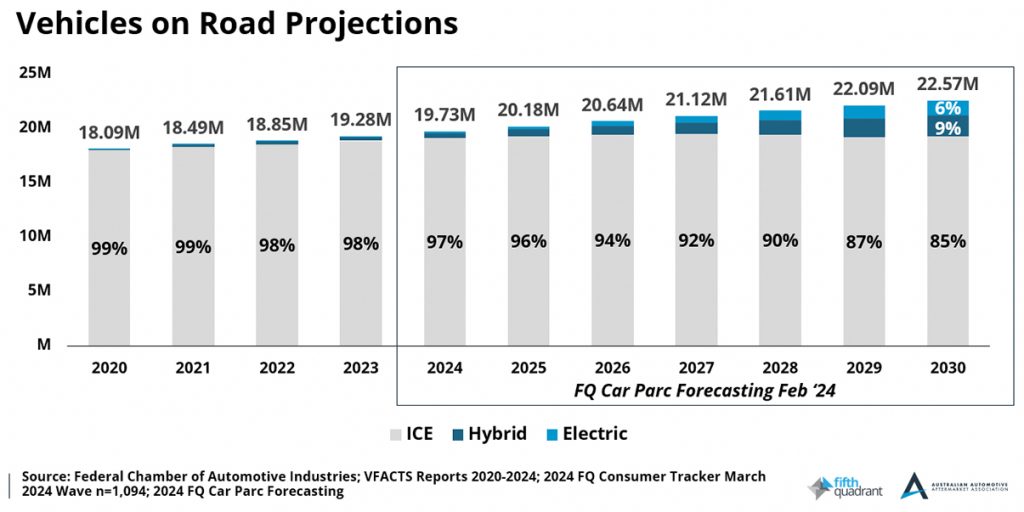
When it comes to delivering these services, the Australian automotive aftermarket includes 27,700 service and repair workshops, employing just under 40,000 of the 90,000 qualified technicians across all industries in Australia.
Despite this seemingly healthy workforce, the AAAA salary benchmarking research identified an average of 1.5 vacancies per workshop (one qualified technician and half an apprentice).
When applied to the 27,700 workshops across the country, this results in a shortage of over 27,000 qualified technicians, setting the ideal workforce number at over 67,000 qualified technicians.
On top of this, the aftermarket industry is in direct competition with other adjacent industries such as mining, who are just as eager to hire qualified technicians.
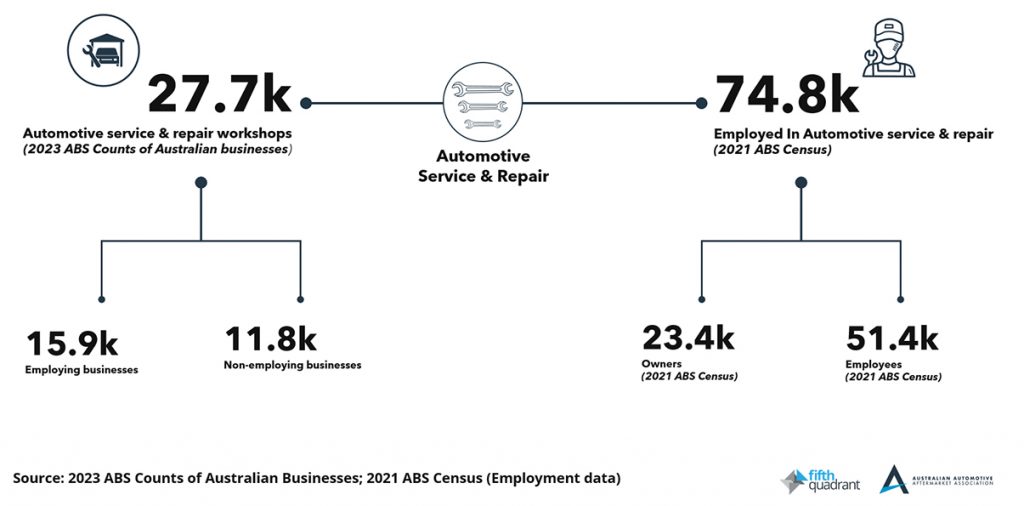
While workshops are actively hiring from a range of sources (including offering visa to overseas candidates), it is also important to be training up the next generation of techs.
Australia currently has 37,000 Motor Mechanic apprentices in training. While that’s a solid number, just 40 percent (approximately 14,800) are employed in aftermarket workshops, highlighting the need for the sector to do better at attracting new entrants.
This holds particularly true given one in two workshops would like to hire an apprentice, a shortfall of 14,000 employees.
On a more positive note, while the majority are still male, the past five years have seen female enrolments more than double, indicating positive change when it comes to gender diversity.
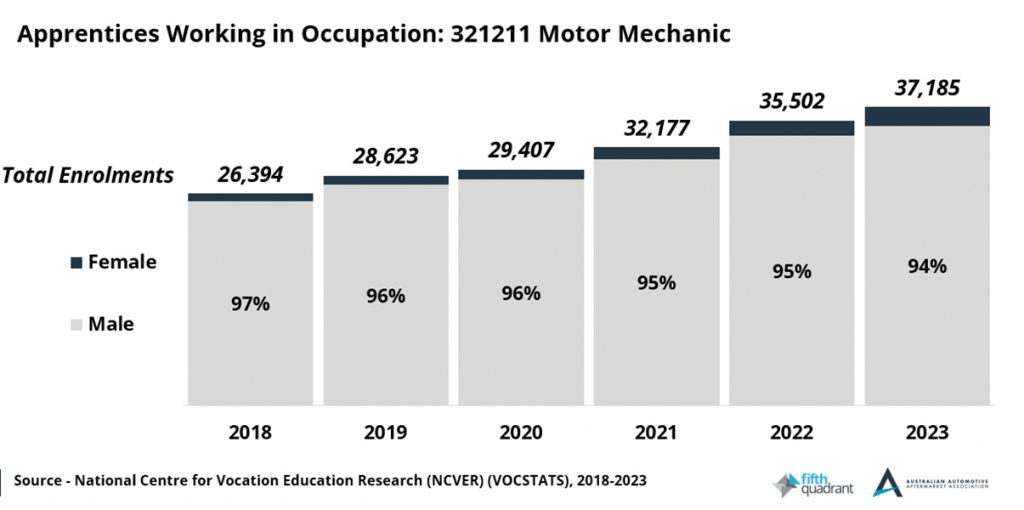
The shortage of technicians and high demand for services will place significant pressure on workshop operators in the years ahead, while the rise of electric and hybrid vehicles means they need to balance the skills needed to service both new tech and traditional engines.
By staying on top of these trends, workshop owners can manage resources better, attract more apprentices, and meet the needs of Australia’s 19.7 million registered vehicles, keeping their businesses competitive in a changing market.
This column was prepared for AAAA Magazine by Fifth Quadrant, the AAAA’s partners in the AAAA Aftermarket Dashboard which is delivered to AAAA members each quarter.
For more information about Fifth Quadrant’s services, visit www.fifthquadrant.com.au or contact Ben Selwyn on ben@fifthquadrant.com.au




